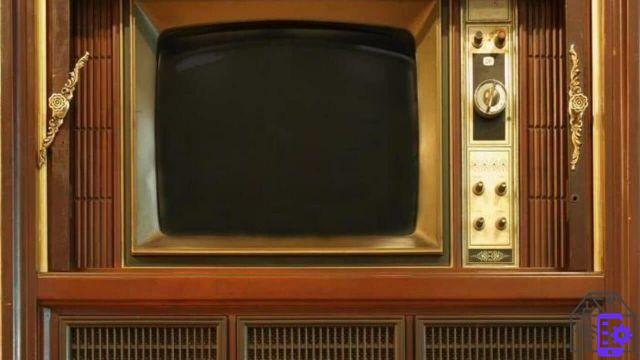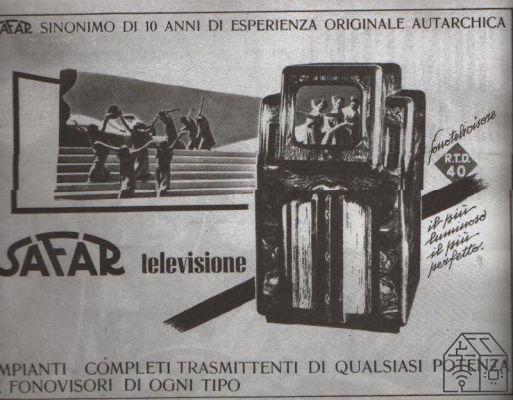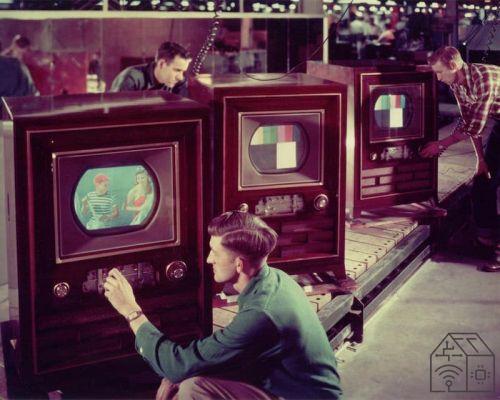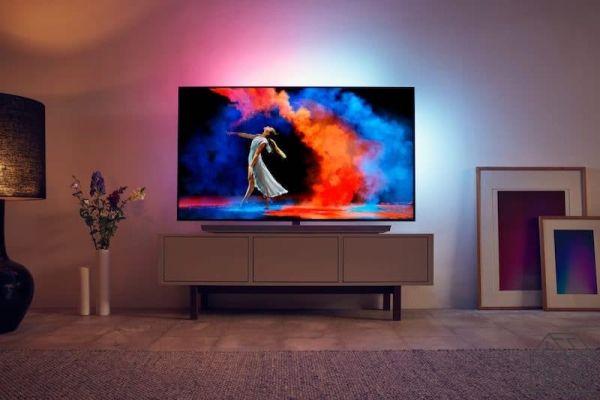
Let's find out how television has changed over the decades, from early models to current smart TVs.
And how, along with the television set, the technology of television has also changed.
Small terminological clarification
As for the orange-orange question (the first is the tree, the second is the fruit), sometimes we get confused between the terms television and television. We therefore remember that the television is the television set, while the television is the remote transmission (tele-) of moving images almost always accompanied by sound.
Then came the term TV to complicate everything, because it is used indifferently both for the apparatus and for the technology.
It should also be said that the difference between the terms television and television is not even too important for the article you are reading. Because the history of the television set necessarily goes hand in hand with that of technology and television programming.

How the TV has changed: the first experiments
Since the end of the XNUMXs, attempts have been made to exploit the photosensitive qualities of selenium, working on the first imaging systems. So here are similar experiments in different countries: France, Italy, the United States and Portugal.

The birth of the television: two symbolic dates
It is John Logie Baird who on 2 October 1925 projects the first television image. And her delivery boy William Taynton, the subject of the shoot, becomes the first man to appear on television. It is therefore inevitable that the birth of television and television is contemporary.
Baird's machine operated on a mechanical scanning system based on a Nipkow disk and, in fact, on the photosensitivity of selenium.
Baird begins public performances of his mechanical television, and in 1927 will be able to broadcast from London to Glasgow, thus covering 705 kilometers.
Ma precisely in that year, and precisely on September 7, the American inventor Philo Farnsworth created the first electronic television. That is, based on a cathode ray tube, rudimentary but similar to the one that would have remained on the market for decades.

How the TV has changed: from black and white to color
From the second half of the XNUMXs, some countries, including Germany, regularly broadcast the first television programs. And the 1936 Berlin Olympics will be the first major sporting event to be filmed and televised.
In 1942 there were seven thousand television sets in the United States.
In those years, the first experiments of televisions capable of transmitting color images began. The first color images will arrive in the homes of US families in 1955.
A year earlier, in 1954, the National Program had made its official debut, the first Italian network. Although in reality the ancestor of Rai 1 had already been broadcasting regularly for more than a year.
In Italy color TVs arrive very late, in 1977. Only then had a controversy (including political) unraveled between supporters of the PAL and SÉCAM coding system.

The boom of television
Meanwhile the television is entering the homes of all families. In the United States, only 3 million people owned a machine in 1950, and by 1961 it had risen to 57 million.
By 1960, television has already landed in fifty-six countries around the world, and the number will double in ten years.
Between the seventies and eighties, four other factors consecrate the success of TV: the development of private broadcasters, the ever wider diffusion of video recorders, the birth of teletext (Rai Televideo dates back to 1981, which was soon joined by similar services from private channels). Finally, pay TV, which arrived in Europe in 1982 with the Swiss Teleclub.

How the TV has changed: LCD, plasma and beyond
If television evolves, the television set does not stand by and watch.
From the nineties of the last century the cathode ray tube began to be abandoned, in favor of increasingly flat screens (and with more and more thumbs).
The two technologies in eternal struggle for some time, plasma and LCD, actually have more remote origins: respectively 1964 and 1965.
If plasma screen technology allows you to produce very large and thin TVs, LCD technology allows you to fine-tune luminaires with backlighting based on fluorescent lamps: normally consumption is lower and colors more vivid.
LED technology further reduces consumption and improves brightness.
Then there is the recent OLED technology, with screens that produce their own light thanks to organic diodes. This allows the production of ultra-thin, and in some cases even foldable, screens.
Discount History of televisions in Italy. From the beginnings to web tv
History of televisions in Italy. From the beginnings to web tv
- Piazzoni, Irene (Author)
Not just TV
From the nineties the signal began to pass from analogue to digital, and from next September 1st in Italy the transition to the new digital terrestrial will take place.
In the meantime, the definition improves to the point that it is even difficult to keep up with the new acronyms. We had just gotten used to HD TVs (high definition televisions) and we saw Ultra HD appear, already supplanted by HDR (High Dynamic Range). It is a technology that increases the contrast and depth of colors, up to almost the level of perception of the eye.
Meanwhile, the pixel resolution has reached the acronym 4K.
Ma perhaps the biggest revolution in recent years is the emergence of Smart TVs. The TV stops being just the tool to passively enjoy television programs and, thanks to the increasingly popular formula of all in one, it integrates with the Web, with home automation and with all our devices.
Since that October 2, 1925, in less than a century we have come a long way.




















![[Review] Samsung Powerbot VR7000: the robot vacuum cleaner from Star Wars](/images/posts/6bc44de38605b5c0fa12661febb1f8af-0.jpg)





